Exploring the Ethics of AI and Robotics in Surveillance: A Necessary Conversation
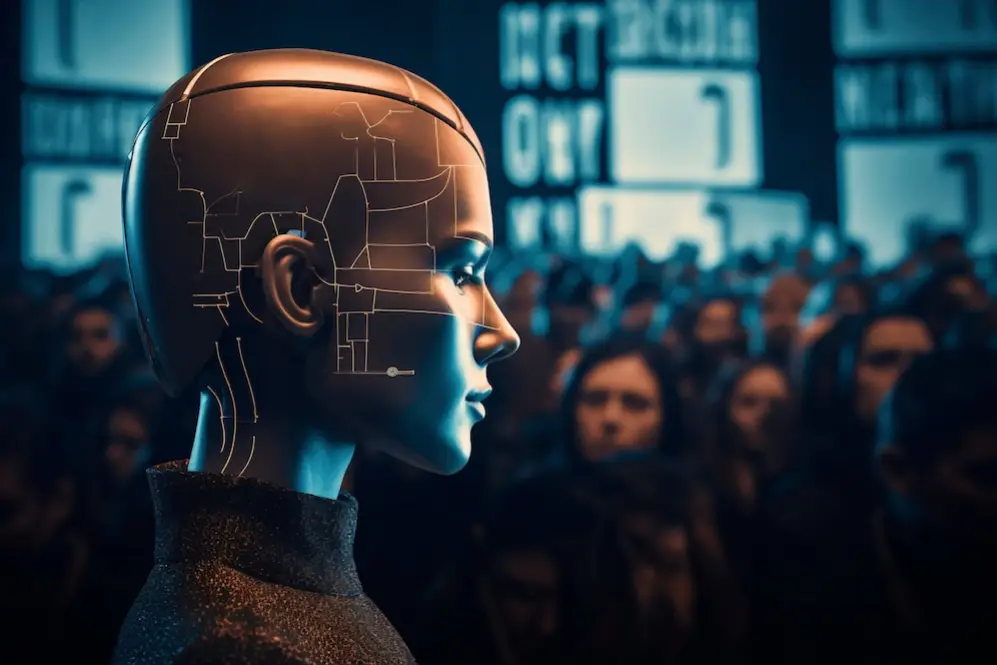
Exploring the Ethics of AI and Robotics in Surveillance: A Necessary Conversation Uncategorized April 23, 2025 As robotics and intelligent systems become the new standard in surveillance, society stands at a critical crossroads—not just of innovation, but of ethics. The conversation is no longer just about what we can do with technology—but what we should do. We believe that effective surveillance isn’t just about power—it’s about responsibility. The Rise of Intelligent Surveillance Robotic patrols. Smart cameras. Systems that detect behavioral anomalies and alert authorities before an incident occurs. These innovations offer unmatched efficiency, safety, and reach. But they also raise important questions: Where does security end and intrusion begin? How do we balance safety with personal privacy? Who decides how data is used—and who is accountable for errors or misuse? Privacy vs. Protection: Finding the Line The most common ethical challenge is navigating the balance between protection and privacy. Communities want to feel secure, but they don’t want to feel watched. Surveillance must never cross into silent control. That’s why ethical surveillance should be: Transparent : Users and communities should understand what’s being monitored and why. Purpose-driven : Users and communities should understand what’s being monitored and whyTechnology should serve clearly defined goals—like crime prevention or workplace safety—not vague or overreaching mandates. Data-responsible : Personal data should be secured, limited in use, and protected from misuse Accountability in a Robotic World As machines take on more responsibility, so must the people behind them. Ethical use of robotics means: Building in human oversight Setting clear protocols for alerts and responses Designing systems that protect both property and dignity Moving Forward, Responsibly AI and robotics are reshaping the world of surveillance—and they should. But they must do so with respect, caution, and collaboration. We’re not just building security systems. We’re helping build safe, ethical, and forward-looking communities. Let’s continue the conversation. Visit vioracorp.com to learn more or connect with our team. Modern monitoring isn’t just watching—it’s working.
How Monitoring Is Evolving—And Why It No Longer Sleeps
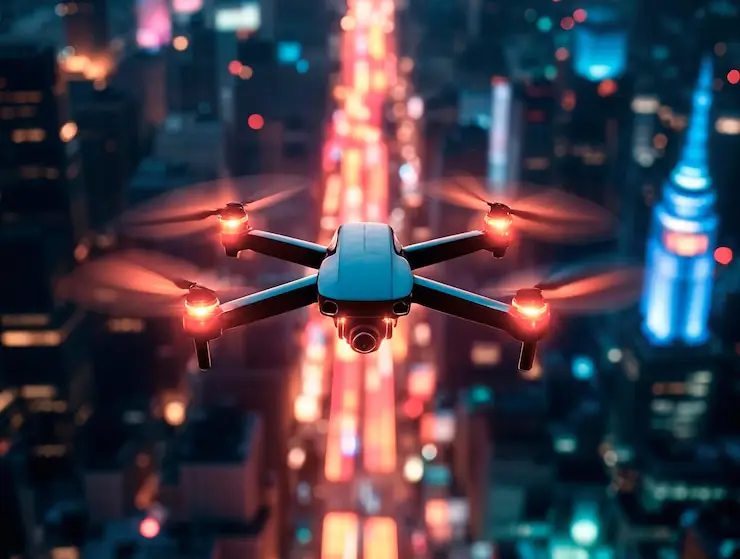
How Monitoring Is Evolving—And Why It No Longer Sleeps Uncategorized April 23, 2025 There was a time when “monitoring” meant a person behind a screen, watching grainy footage, waiting for something to happen. Today, that’s ancient history. Thanks to modern technology, monitoring has gone from passive observation to intelligent, around-the-clock protection—and it’s changing everything. Monitoring That Thinks, Not Just Watches This new generation of surveillance doesn’t just record what’s happening. It analyzes it in real-time. Imagine a system that can: Spot a person lingering where they shouldn’t be Recognize a vehicle that’s out of place Alert a team before a break-in, not after That’s the power of intelligent monitoring. It learns, adapts, and responds—without waiting on human eyes to catch up. The Twist? Monitoring Isn’t Just About Security Anymore Here’s where it gets interesting:Businesses are using intelligent monitoring to improve operations, manage crowd flow, enforce safety protocols, and even optimize staffing. It’s no longer just about keeping people out—it’s about running smarter from the inside out. Monitoring with a Mission We believe monitoring should empower, not just protect.Our solutions offer 24/7 remote oversight, real-time alerts, and customizable features for facilities that require reliability without compromise. Whether you’re overseeing a warehouse, a school, or a multi-site enterprise, we’re here to help you sleep while your system doesn’t Ready to upgrade your security or monitoring strategy? Visit vioracorp.com Follow us on Instagram, LinkedIn, and Facebook for insights and industry updates Modern monitoring isn’t just watching—it’s working.
How Advanced Technology is Changing the Face of Cameras and Surveillance
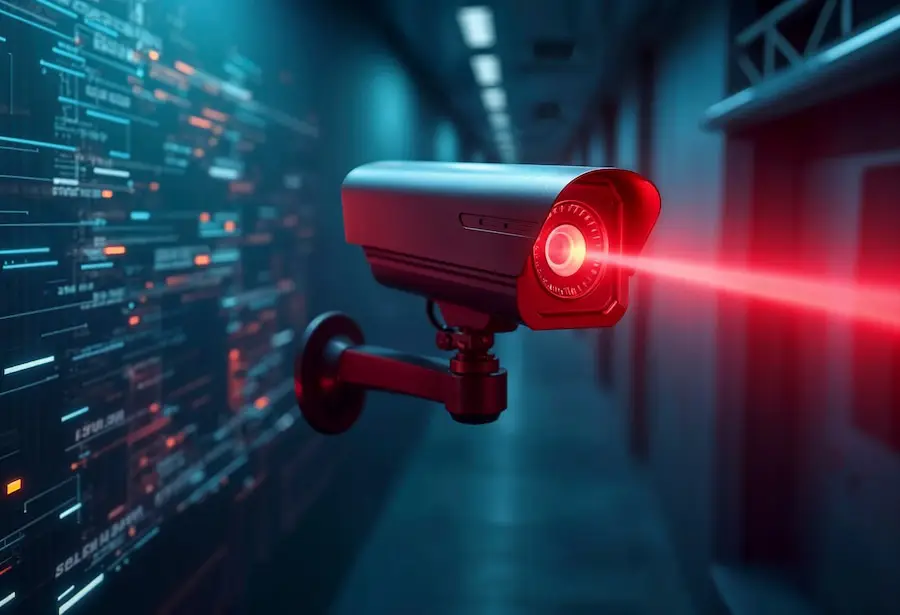
How Advanced Technology is Changing the Face of Cameras and Surveillance Uncategorized April 23, 2025 The world of surveillance is no longer just about watching—it’s about anticipating, analyzing, and acting in real time. Modern surveillance cameras, supported by advanced technology, now do far more than record. They can detect motion, recognize faces, spot unusual behavior, and trigger alerts within seconds. This evolution is helping schools, hospitals, government buildings, and businesses stay not just secure, but smart. Here’s how the game is changing: Smarter Cameras : Today’s systems can identify threats, spot abandoned objects, and detect loitering or restricted access violations—all without human intervention Faster Responses : Real-time alerts let security teams act before an incident escalates. Less Human Error : Automated monitoring reduces the risk of missed details and fatigue. Remote Monitoring : Business owners and security teams can now monitor multiple locations from their phones or centralized dashboards. We provide cutting-edge surveillance and monitoring solutions tailored to each industry’s unique needs. Whether you’re protecting a hospital, school, or high-security site, we’ll help you stay ahead.
Revolutionizing Surveillance Industries with Robotics and Advanced Technology

Revolutionizing Surveillance Industries with Robotics and Advanced Technology Uncategorized April 23, 2025 The landscape of surveillance is rapidly transforming. Gone are the days of passive monitoring and slow response times. Today, forward-thinking companies are embracing modern surveillance solutions that combine robotics and advanced technologies to offer real-time insights, intelligent threat detection, and proactive intervention. This is not just an upgrade—it’s a revolution. A New Era of Surveillance At the core of this transformation lies the integration of robotics with intelligent systems. These innovations are empowering security teams to do more than just watch—they now respond, analyze, and predict. Whether it’s in government buildings, healthcare centers, schools, malls, or military facilities, the expectations for security have changed. Static cameras and human watchfulness are no longer enough. Decision-makers are demanding smarter, more adaptable systems that can scale, integrate, and act fast. Key Innovations Leading the Change 1. Autonomous Surveillance Robots Mobile surveillance units equipped with sensors, cameras, and real-time alert systems are now patrolling perimeters and facilities. These robotic systems reduce manpower dependence while offering uninterrupted coverage—even in hazardous or hard-to-reach zones. 2. Smart Detection Capabilities Modern systems supported by advanced algorithms can detect unattended objects, breaches in restricted areas, loitering, and even behavioral anomalies. This level of proactive monitoring dramatically shortens response time and reduces human error. 3. Seamless Remote Monitoring The rise of 24/7 cloud-based monitoring allows clients to have eyes on their assets—anytime, from anywhere. Facilities no longer need large onsite teams to ensure security. With real-time alerts and centralized dashboards, organizations can manage multiple properties across the country with ease. 4. Integrated Access & Gate Control Systems Controlled access systems powered by intelligent technology are now merging with surveillance to offer holistic protection. From facial recognition to mobile-based access authorizations, these innovations are simplifying security while strengthening it. Beyond Surveillance: Strategic Advantage Advanced monitoring is no longer a back-office function—it’s a strategic advantage. Businesses that invest in intelligent surveillance enjoy: Reduced liability risks Enhanced public trust and customer safety Lower operational costs through automation Faster compliance with regulatory standards we’re not just keeping up with the future—we’re helping shape it. Our surveillance systems combine robotics, real-time monitoring, and sophisticated detection tools to help protect what matters most. Whether you manage a hospital, school, or industrial site, we offer customized solutions designed to grow with you. Let’s Talk Ready to explore how robotics and modern surveillance can transform your facility’s security? Let’s connect. Book a consultation on vioracorp.com or follow us on LinkedIn, Instagram, and Facebook for insights and updates. The future of security is smarter, faster, and more reliable. Let’s build it together.
Transforming Surveillance and Changing Lives with Advanced Technology
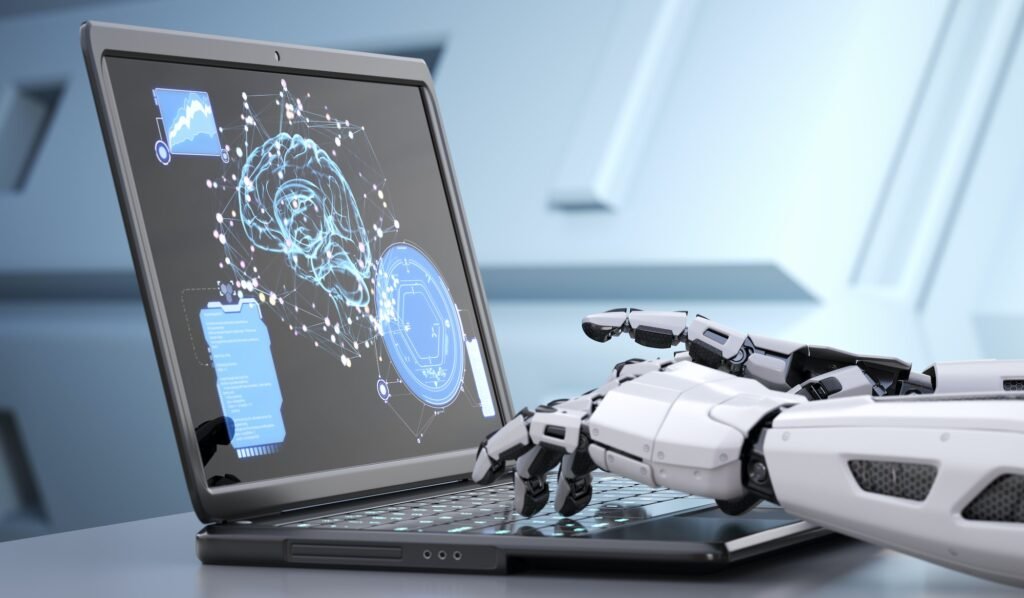
How AI Robotics is Revolutionizing the Surveillance Industry Uncategorized March 11, 2025 The surveillance industry has undergone a dramatic transformation with the integration of advanced technology. From high-definition CCTV cameras to remote monitoring and real-time analytics, modern surveillance systems provide unparalleled security and efficiency. However, as surveillance technology becomes more sophisticated, ethical concerns surrounding privacy, data security, and misuse of power have also intensified. Balancing Security and Privacy The primary function of surveillance technology is to enhance security. Businesses, governments, and homeowners rely on these systems to deter crime, monitor sensitive areas, and respond swiftly to potential threats. However, this increased surveillance raises significant privacy concerns. Should individuals be constantly monitored in public spaces? How much surveillance is too much? Striking a balance between safety and privacy is critical to maintaining public trust. Data Protection and Security Modern surveillance systems generate vast amounts of data, including video footage, facial recognition records, and movement patterns. Ensuring the security of this data is paramount. Unauthorized access, hacking, or data breaches can lead to identity theft, blackmail, or other malicious activities. Companies handling surveillance data must implement robust cybersecurity measures, encrypt sensitive information, and comply with data protection regulations to safeguard individuals’ rights. The Risk of Bias and Discrimination Some surveillance systems incorporate automated decision-making tools and facial recognition technology. While these advancements can enhance efficiency, they also introduce the risk of bias and discrimination. Studies have shown that facial recognition software may have a higher error rate for certain demographic groups, potentially leading to false accusations or wrongful detentions. Ethical implementation of these technologies requires continuous improvement, transparency, and unbiased training data to minimize discriminatory practices. Regulatory Compliance and Ethical Oversight Governments worldwide are grappling with how to regulate the use of surveillance technology. In the absence of clear guidelines, businesses must proactively establish ethical policies that align with fundamental human rights. Compliance with local and international laws, such as the General Data Protection Regulation (GDPR) and other data privacy acts, is essential in ensuring responsible surveillance practices. The Future of Ethical Surveillance As technology continues to evolve, ethical considerations must remain at the forefront of the surveillance industry. Companies should prioritize transparency, informing individuals about surveillance practices and obtaining necessary consent where applicable. Furthermore, the development of ethical AI frameworks and third-party audits can help ensure that surveillance technologies are used responsibly and for their intended purpose—enhancing security while respecting individual rights. Conclusion The ethical implications of advanced surveillance technology cannot be overlooked. While these systems provide essential security benefits, they also present challenges that must be addressed through responsible implementation, strict data security measures, and adherence to ethical guidelines. By fostering a culture of accountability and transparency, the surveillance industry can harness the power of advanced technology while maintaining the trust and confidence of the public.
Exploring the Ethics of Advanced Technology in the Surveillance Industry

Exploring the Ethics of Advanced Technology in the Surveillance Industry Uncategorized March 11, 2025 The surveillance industry has undergone a dramatic transformation with the integration of advanced technology. From high-definition CCTV cameras to remote monitoring and real-time analytics, modern surveillance systems provide unparalleled security and efficiency. However, as surveillance technology becomes more sophisticated, ethical concerns surrounding privacy, data security, and misuse of power have also intensified. Balancing Security and Privacy The primary function of surveillance technology is to enhance security. Businesses, governments, and homeowners rely on these systems to deter crime, monitor sensitive areas, and respond swiftly to potential threats. However, this increased surveillance raises significant privacy concerns. Should individuals be constantly monitored in public spaces? How much surveillance is too much? Striking a balance between safety and privacy is critical to maintaining public trust. Data Protection and Security Modern surveillance systems generate vast amounts of data, including video footage, facial recognition records, and movement patterns. Ensuring the security of this data is paramount. Unauthorized access, hacking, or data breaches can lead to identity theft, blackmail, or other malicious activities. Companies handling surveillance data must implement robust cybersecurity measures, encrypt sensitive information, and comply with data protection regulations to safeguard individuals’ rights. The Risk of Bias and Discrimination Some surveillance systems incorporate automated decision-making tools and facial recognition technology. While these advancements can enhance efficiency, they also introduce the risk of bias and discrimination. Studies have shown that facial recognition software may have a higher error rate for certain demographic groups, potentially leading to false accusations or wrongful detentions. Ethical implementation of these technologies requires continuous improvement, transparency, and unbiased training data to minimize discriminatory practices. Regulatory Compliance and Ethical Oversight Governments worldwide are grappling with how to regulate the use of surveillance technology. In the absence of clear guidelines, businesses must proactively establish ethical policies that align with fundamental human rights. Compliance with local and international laws, such as the General Data Protection Regulation (GDPR) and other data privacy acts, is essential in ensuring responsible surveillance practices. The Future of Ethical Surveillance As technology continues to evolve, ethical considerations must remain at the forefront of the surveillance industry. Companies should prioritize transparency, informing individuals about surveillance practices and obtaining necessary consent where applicable. Furthermore, the development of ethical AI frameworks and third-party audits can help ensure that surveillance technologies are used responsibly and for their intended purpose—enhancing security while respecting individual rights. Conclusion The ethical implications of advanced surveillance technology cannot be overlooked. While these systems provide essential security benefits, they also present challenges that must be addressed through responsible implementation, strict data security measures, and adherence to ethical guidelines. By fostering a culture of accountability and transparency, the surveillance industry can harness the power of advanced technology while maintaining the trust and confidence of the public.
Revolutionizing industries with AI and robotics
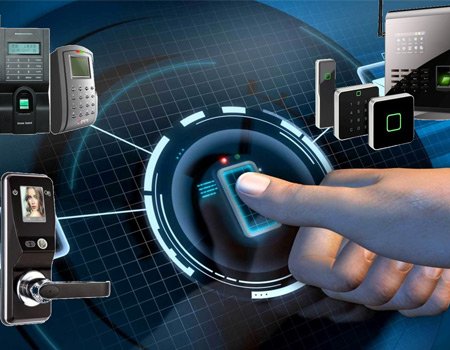
Transforming Industries and Changing Lives with AI Uncategorized March 11, 2025 Revolutionizing industries with AI and robotics Lorem ipsum dolor sit amet, consectetur adipiscing elit, sed do eiusmod tempor incididunt ut labore et dolore magna aliqua. Ut enim ad minim veniam, quis nostrud exercitation ullamco laboris nisi ut aliquip ex ea commodo consequat. Duis aute irure dolor in reprehenderit in voluptate velit esse cillum dolore eu fugiat nulla pariatur. Excepteur sint occaecat cupidatat non proident, sunt in culpa qui officia deserunt mollit anim Consectetur adipiscing elit, sed do eiusmod tempor incididunt ut labore et dolore magna aliqua. Ut enim ad minim veniam, quis nostrud exercitation ullamco laboris nisi ut aliquip ex ea commodo consequat. Duis aute irure dolor in reprehenderit in voluptate velit esse cillum dolore eu fugiat nulla pariatur. Excepteur sint occaecat cupidatat non proident, sunt in culpa qui officia deserunt mollit anim Proin ullamcorper pretium orci. Donec nec scelerisque leo. Nam massa dolor, imperdiet nec consequat a, congue id sem. Maecenas malesuada faucibus finibus. Donec vitae libero porttitor, laoreet sapien a, ultrices leo. Duis dictum vestibulum ante vitae ullamcorper. Phasellus ullamcorper, odio vitae eleifend ultricies, lectus orci congue magna, in egestas nulla libero non nisl. Etiam efficitur in arcu ut lacinia. Lorem ipsum dolor sit amet, consectetur adipiscing elit. Donec a feugiat purus. Duis turpis nunc, aliquam id nunc ac, convallis dictum nisi. Curabitur vehicula tincidunt sapien, vel c ac. Donec diam augue, consequat sit amet metus ac, bibendum mattis massa. Duis mollis, ligula pretium consequat aliquet, nibh purus fermentum mi, bibendum molestie libero enim in sapien. Curabitur vestibulum sit amet nibh sed blandit bibendum molestie libero enim in sapien. Donec scelerisque enim non dictum aliquet. Sed ec nunc. Suspendisse volutpat elit nec nisi congue tristique eu at velit. Curabitur pharetra ex non ullamcorper condimentum. Morbi sit amet dui convallis, mattis augue id, ullamcorper massa. Fusce vulputate sodales hendrerit.

